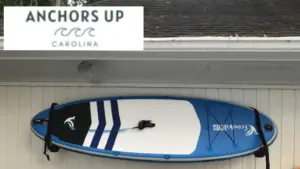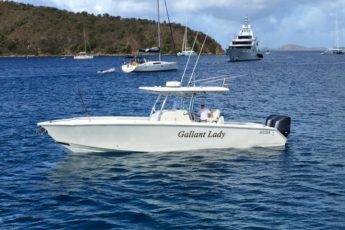One of the most exciting watersports that has exploded as of late is paddleboarding. The sport of paddleboarding is universal across all bodies of water, including the ocean, rivers, coastal waters, lakes, ponds, and more. I am an avid paddleboarder and thoroughly enjoy getting out on the water for both the scenery and the exercise. Of course, falling off the board is par for course, so therefore, it is essential to understand how to get back on a paddleboard after falling off. Here is what you need to know about getting back on the board if you’re new to the watersport.
What Causes People To Fall Off Of Paddle Boards
Without question, you’ll end up in the water on occasion if you’re heading out on a paddleboard frequently. Yes, even the most experienced paddleboarders fall off the board and into the water.
Improper Foot Positioning
Without a doubt, one of the primary reasons that paddleboarders end up in the water is because of improper foot positioning.
I highly recommend maintaining a wide stance on the board compared to your feet being positioned closely together. A wide stance provides extra stability when encountering waves.
In addition to a wide stance, do not stand too far forward or backward on the board. The front should not be sticking above the water, similarly to the back. If you find the front or back is elevated, move your position so the board is level with the water.
Inadequately Inflated Paddleboard
Importantly I am referring to inflatable paddleboards when it comes to improper inflation. This does not apply to solid core boards.
Failure to inflate the board to the recommended levels unquestionably causes instability as it is not nearly as buoyant. The lack of buoyancy causes the feet to sink into the board therefore, proper footing is never maintained.
Always pump the board the recommended PSI range to maximize stability and reduce the number of falls.
Boat Wake
Unless you’re paddleboarding on a private body of water, you’re unlikely to avoid boat wakes.
Without a doubt, boats have the ability to push massive wakes, but more often than not, they can be managed when standing on a paddleboard.
Always use caution when a boat is in the vicinity. I recommend you stop paddling and focus strictly on balance until the boat wake has passed.
Rough Water
Similar to boat wakes is rough water caused by wind and current. Coastal waters are particularly prone to rough water, especially areas where the wind opposes the flow of the current. However, this is not to say that freshwater lakes are immune to waves.
Undoubtedly, you’ll want to focus heavily on balance when navigating rough water. However, understand that you may end up taking a swim.
Best Technique To Get On A Paddleboard After Falling Off
I have got you covered on how to get back on a paddleboard after falling off. Unquestionably, I have one critical tip, and that is strapping the leash to your ankle each and every time you step up on the board. Never put yourself at risk of needing to chase down a board. Here is how to get back on a paddleboard after falling off.
Never Climb Back On The Board At The Ends
Unquestionably, never climb back on the board from the front or back end. The front and the back end of the board is not the most stable point to get back into position to begin paddling again.
After falling off, always swim to the center of the board as it is the most stable. In addition to stability, the central point of the board is fitted with a handle intended for carrying.
Use The Board To Your Advantage
Without a doubt, the board is designed to aid you in climbing back on top in the event you take a dip.
Once you’re alongside the paddleboard, place the dominant hand on the opposite side of the board and the other hand on the center handle. The positioning of the hands allows you the most power to slide yourself up and onto the board without causing it to flip.
Drag Your Body Onto The Paddleboard
The next step is dragging your body out of the water and onto the board. I’ll admit it is not an easy task.
To pull yourself up and onto the paddleboard, grab the opposite side of the board with one hand and the handle with the other. Pull yourself up perpendicular to the paddleboard.
Next, once you’re stable on top of the paddleboard, rotate your body. The feet slide to the back while your head and hands move to the front.
Stand Up On The Paddleboard
Last, you’ll need to get yourself upright on the board. I must admit, the transition sounds more complicated than it actually is.
First, when you’re lying with your feet towards the back and your head at the front, drag your knees forward.
Second, slide your knees beneath your body at the center of the board to become upright.
Third, slide one foot left and the other right. Importantly, you’ll need to create a wide stance to avoid falling into the water again.
Lastly, position your feet while moving your paddle back into position to begin paddling again.
Get Back Up On Your Paddleboard
Unquestionably getting back up on your board is far less daunting than it seems. Ensure to follow the steps of how to get back on a paddleboard after falling off. I have tested the method noted above and can assure you that is the best approach to get up and out of the water. Don’t be concerned about getting back on your board in the event you end up taking a dunk.







